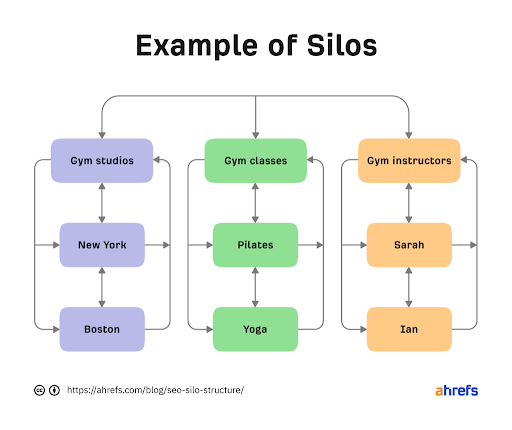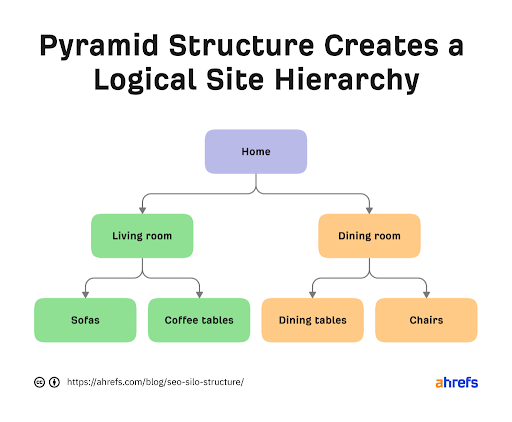When it comes to search engine optimisation (SEO), there are countless factors you have to take into consideration: technical optimisation, content, backlinks, and more. Whether you have an in-house or external team working on your SEO, you will be investing a certain sum of money into the work. You already know that well-known brands are spending millions of dollars to rank at or near the top for the most lucrative keywords, so does that mean that small businesses or startups don’t have a chance? While it’s true that many big businesses have devoured the most common money-keywords and informational topics related to their niche, it doesn’t necessarily mean that you’re out of luck.

You just have to work smarter instead of trying to win the spending game. Here’s how to do that:
Don’t Be a Jack of All Trades
As entrepreneurs, we have a tendency to want to dabble a bit in everything until we hit upon the right formula. This manifests in the way we approach search engine optimisation too. We’ll spend some of our time carefully optimising our content, later we’ll look into backlinks, maybe do a bit of preliminary keyword research.
And then we wonder why nothing happens.
There are also some entrepreneurs at the other end of the spectrum; those who dive into one aspect of SEO to the exclusion of all else. They focus entirely on building backlinks, doing off-site guest posts and so on, but neglect things like proper content optimisation and strategy.
The way to win at SEO is to find a happy medium in between dabbling and deep-dives, and the way to do that is to create a strategy where every effort you make builds on the others. Fortunately, we’ll lay out that strategy for you here:
Topic and Entity Research
At the heart of every great search engine optimisation campaign is research. Rather than go head-to-head with whoever has the deepest pockets in your niche, be more selective about the topics and keyword cluster you do choose. Large brands have the budget and human backing to optimise for a large array of clusters all at once, whereas smaller businesses may not have that luxury. But that doesn’t mean you’re out of luck. It simply means you need to hyper-target certain topics and clusters that are most likely to convert, rather than trying to spread your resources and budget too thin.
Focus on the Long Tail
If you’ve been involved in SEO for any length of time, you already know about the “long tail” — those search terms that may not be searched as frequently but have a higher probability of leading to a sale (or whatever other action you want your users to take).
For example, competing for the key phrase “diamond engagement rings”, is a race to the bottom when it comes to trying to outspend major name brands in that space. Someone searching for diamond engagement rings could just be looking for inspiration and nowhere near the buying phase. They may not have even popped the question yet! On the other hand, searching for something like “18k gold princess cut diamond engagement ring” is not only a term you can rank for (likely to have much lower competition), but indicates someone is very close to making a purchase and has already gone through the process of deciding the cut, the stone, the setting, and more.
Understand User Intent
This takes us to user intent. Someone searching solely for “diamond engagement rings” is still in the “just looking” phase. Whereas someone searching for a very long and detailed phrase has a specific intent in mind (likely making a purchase). If they can find what they’re looking for on your website, their likelihood of converting is much higher than the person who’s just browsing. In addition to increasing your conversion rate, targeting these longer-tail phrases with more specific intent driving them is much more cost effective than trying to catch everyone in the market for a “diamond engagement ring” with the same broad and expensive net.
Optimise for Local Geography
If your business serves your local community or region, it’s a good idea to optimise for keywords related to that area. Competition can be fierce even for products and services in large cities, so it may be a wise idea to target keywords of specific regions or boroughs within those areas to rank higher in search results.
Adhere to Google’s Guidelines
Google changes and updates its algorithm frequently in accordance with user search trends as well as attempts to circumvent the system (such as with AI writing, backlink bots and other tools). As of December 2022, Google encourages content creators and publishers to adhere to the E-A-T guidelines and create content that includes their:
Expertise
Authoritativeness and
Trustworthiness
E-E-A-T Like You Mean It
Recently, Google added another E to its E-A-T algorithm evaluator: experience. From this point forward, the algorithm will look for content that’s not only crafted with expertise, authoritativeness and trustworthiness, but also experience (EEAT).
It gives the following example, “if you’re looking for information on how to correctly fill out your tax returns, that’s probably a situation where you want to see content produced by an expert in the field of accounting. But if you’re looking for reviews of a tax preparation software, you might be looking for a different kind of information — maybe it’s a forum discussion from people who have experience with different services.”
You can see the full set of guidelines that Google uses to evaluate websites here.

Don’t Forget Your Site Structure
The architecture of your site also helps your ranking. Many search engine optimisation experts recommend the traditional “silo” which groups together pages in specific categories based on user search patterns. Here’s an example from AHREFS that shows what a traditional SEO silo looks like:

A traditional SEO silo structure
The problem, as AHREFS mentions is, “what if Sarah teaches pilates at the New York studio?” Wouldn’t you just want to link internally to her profile? Yes, but then that breaks the silo and spills the pattern you’ve so rigidly built.
Instead, what many are starting to recommend is a pyramid-like structure, like this:

Search engines can easily navigate both types of sites, but the pyramid option has the distinct advantage of letting you link internally wherever you want while still maintaining a logical flow. Not only does this help from a search engine ranking perspective, but it also adds to the user experience as well. Now, users don’t have to go back up through countless categories to drill down to what they really want. This improves user experience which leads to more time on site, and all of the other green-light indicators that Google uses to improve a site’s ranking.
Furthermore, many SEOs have conducted experiments around a theory some call ‘content depth’. This theory is based on improving the E.E.A.T. of a website, by publishing higher volumes of pages (let’s call them ‘child’ pages), underneath the ‘parent’ page – sub-topics which are relevant to the core topic. This can show Google that you are in-fact an authority on that specific subject, simply by demonstrating sheer depth on the matter.
Optimise Your Content
On-site optimisation is about more than just making sure your site structure is on-point. You should also take steps to optimise your content as well as you can. While there are no rules or guidelines for doing so, you should at least follow some simple guidelines:
- Make sure that the content has a specific purpose in mind – i.e. to answer a question, or provide information on a specific subject.
- Mention the actual question or subject in the content – make it obvious to readers you are writing with a purpose – the purpose of answering the intent of what they were searching for.
- Write to your audiences readability expectation – i.e. an intellectual audience will require content catered toward just that, whereas an audience with little to no pre-existing knowledge on the matter may require much easier readability.
- Use visual aid if possible – images, video assets, diagrams, charts, tables etc.
- Take a look at competing pages ranking for the core query you are trying to rank for t – what have they included in their content? What structure have they used? Is it informational copy or is it transactional copy? Have they included lists, tables, charts, diagrams? Is it short and sharp or is it long-form?
- Try to include internal links to the new content from other pages on the site where relevant, and vice versa – link out from the new copy to other pages where relevant.
Get Valuable Backlinks
Backlinks are one of the many ways in which Google and other search engines determine the “clout” of a site; its authority and credibility. If many people are linking back to it, there must be a reason, which then factors into the authoritativeness and trustworthiness that we discussed earlier.
The good news is that there are a wide range of tools out there that allow you to ethically “spy” on your competitors to determine where their backlinks are coming from. From there, you can attempt to get your own either from the same places or similar ones. It’s important to remember, however, that it’s not about how many backlinks a given site has, but about the quality of those backlinks. The more high quality sites you have linking to you, the better your link profile will be. Read more about the types of methods many use to acquire backlinks for their site.
Optimise for All Types of Content
You may not be able to outspend the big name brands, but you can definitely out-optimise them. That means going beyond classic search.
For example, Google also lets searchers find images and videos related to their query, and being chosen as the featured snippet under “People Also Ask” can also be a great boost, especially if your content answers a question starting with things like Who, What, Where, When, Why and How.
Depending on how well you optimise for your specific niche, it may be entirely possible to see your page’s results in everything from images to videos to “People Also Ask” and more.
Treat SEO as an Ongoing Investment
It’s also important to note that trying to rush through and optimise everything under the sun in one fell swoop might get Google’s attention for a moment, but slow and steady wins the race. SEO generally takes time, but more importantly, sustainable SEO is where businesses will see long term gains that are less likely to be just a flash in the pan.
Larger companies not only have the benefit of seemingly bottomless pockets (or at the very least, a considerable budget to spend on their paid ad campaigns), but they also have the advantage of things like:
- A higher velocity of content production – More content creators on their team mean more chances to out-create a smaller business across all of the channels they target, including blogging, video, email, social media and more.
- Digital and classic public relations initiatives – Covering the bases of both digital and classic PR ensures favorable media mentions across major publications both online and offline.
- Conversion rate optimisation testing – Being able to split-test or multivariate-test major changes sitewide and in their campaigns means that larger companies can discover more about what’s working to spur people to action.
- Data and development teams – With entire teams available to sift through the data collected and develop initiatives based on that information, larger companies have a leg up on smaller brands in terms of their sheer ability to implement changes based on the data they receive.
- UX and customer experience – Larger companies have the people, the training and the budget to roll out large-scale user experience (UX) and customer experience optimisations to better improve their odds of a conversion when a lead has come through the funnel.
Smaller businesses can hold their own if the right research is carried out, the right execution plan is put in place, and an experienced SEO consultant on the team to oversee the program.
In fact, a site which seems to have invested in optimisation practically overnight and suddenly dominates the rankings is more likely to be flagged by Google as potentially having used some underhanded black hat methods rather than a company that really, really wants to rank well and is pulling out all the stops to make it happen through sustainable methods!
All Other Things Being Equal, How Do You Outrank the Competition?
Let’s assume that for the moment, you and your competitors are neck and neck in the search engine rankings. You both spend approximately the same amount, you’ve optimised for the same content topics and keywords, and you have all the same backlinks. What then, can you do to help push the odds in your favour?
If your competitors are throwing up quick little article snippets about your chosen topic, be the one that goes in-depth on a particular area or provide full answers to their likely questions. Do the research and the legwork needed to present the information in a way that’s clear and concise. If that means creating charts and graphs and surveying people to get those results, so be it. It’s a lot of work, but it’s also an investment. Remember, that in addition to expertise, trustworthiness and authority, Google is also looking for first-hand experience.
Oftentimes, other sites who may not be in direct competition with you will simply link to your results (like we did here with AHREFS) rather than try to duplicate the results of the study or survey themselves. Even if your competitors could conceivably rewrite your most detailed articles and paraphrase them in their own words, Google gives preference to the first to share such information.
You Don’t Need Bottomless Pockets to Compete
Trying to outrank your competition by targeting the same broad, blanket terms as they do is simply a race to see who has the deeper pockets, and unfortunately, it won’t give you the client quality you’re hoping for. Enquiries that come from generic queries can often be people price shopping, or not in your exact target market (think casting the net and then having to filter through enquiries to find the right one/s). Instead, it’s a far better investment of your time and money to have an experienced SEO consultant take a deep dive into your site, domain, current performance, market and competition to identify the opportunity areas where you are most likely to see cut-through, and drive enquiry/sales from your exact target market. This targeted approach is less likely to require the spend that large corporations expend in order to target the highest competition, broad queries in the market.
As a result, you’ll not only have a finely-tuned engine whose pages rank well, but you’ll also be building your credibility and clout as a recognised authority in your space — and that’s something that is truly priceless.

